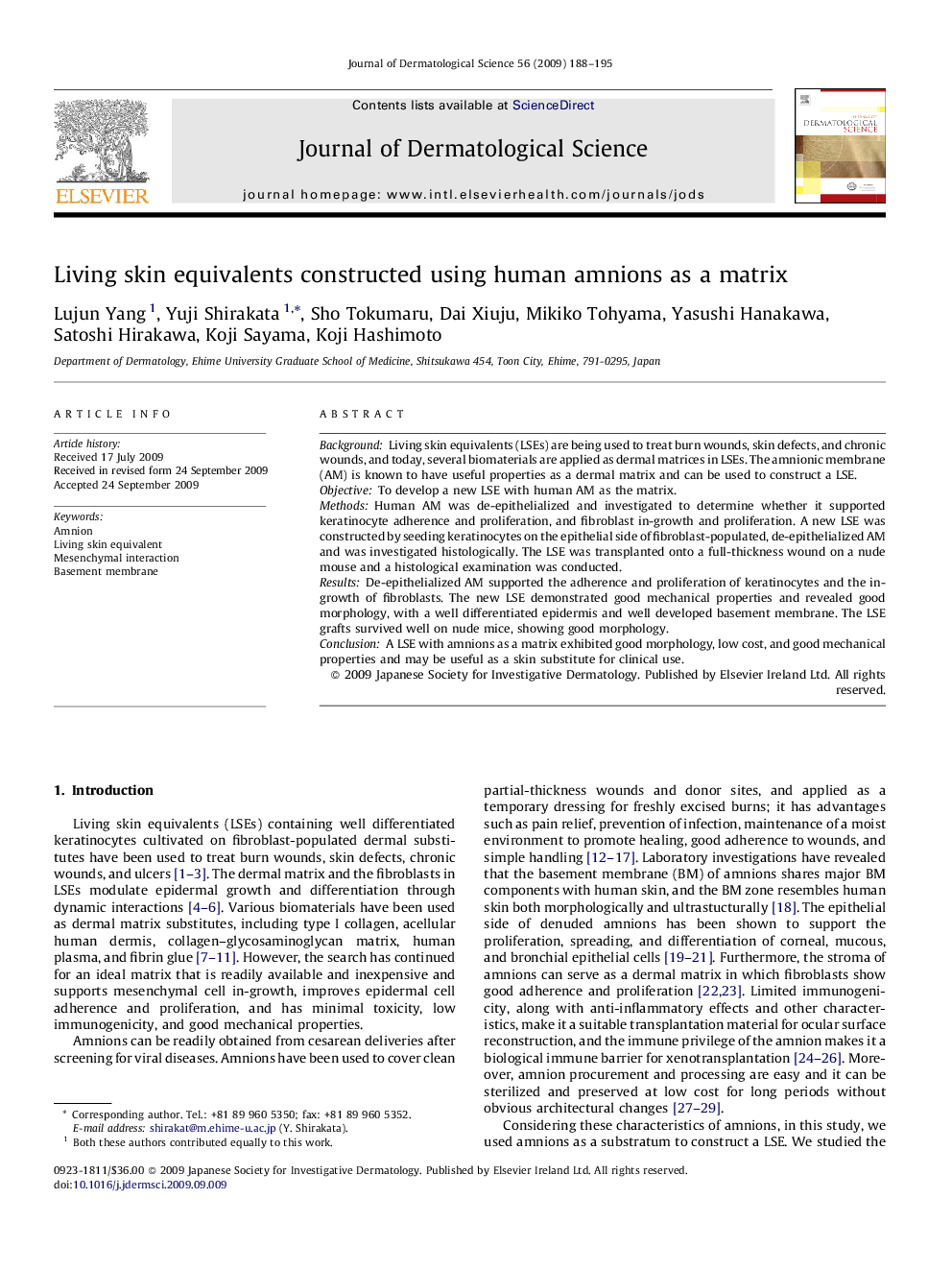| Article ID | Journal | Published Year | Pages | File Type |
|---|---|---|---|---|
| 3213887 | Journal of Dermatological Science | 2009 | 8 Pages |
BackgroundLiving skin equivalents (LSEs) are being used to treat burn wounds, skin defects, and chronic wounds, and today, several biomaterials are applied as dermal matrices in LSEs. The amnionic membrane (AM) is known to have useful properties as a dermal matrix and can be used to construct a LSE.ObjectiveTo develop a new LSE with human AM as the matrix.MethodsHuman AM was de-epithelialized and investigated to determine whether it supported keratinocyte adherence and proliferation, and fibroblast in-growth and proliferation. A new LSE was constructed by seeding keratinocytes on the epithelial side of fibroblast-populated, de-epithelialized AM and was investigated histologically. The LSE was transplanted onto a full-thickness wound on a nude mouse and a histological examination was conducted.ResultsDe-epithelialized AM supported the adherence and proliferation of keratinocytes and the in-growth of fibroblasts. The new LSE demonstrated good mechanical properties and revealed good morphology, with a well differentiated epidermis and well developed basement membrane. The LSE grafts survived well on nude mice, showing good morphology.ConclusionA LSE with amnions as a matrix exhibited good morphology, low cost, and good mechanical properties and may be useful as a skin substitute for clinical use.
